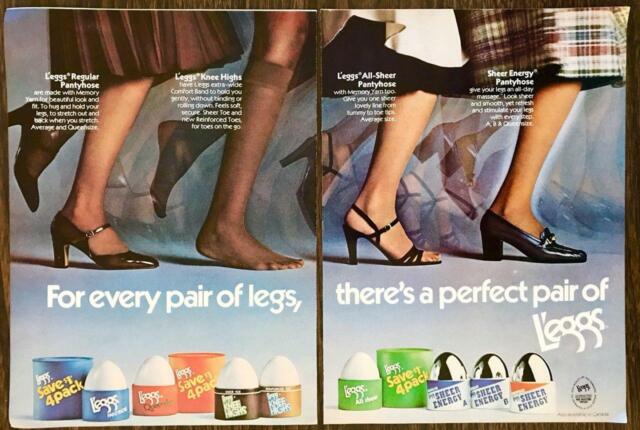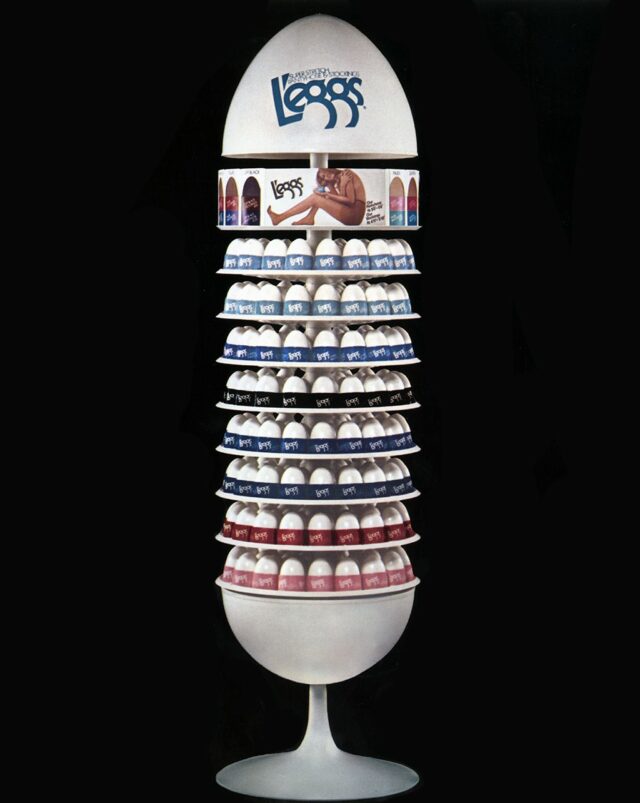As designers and marketers, not to mention consumers ourselves, we admire great product packaging, but it’s almost always an afterthought to a great product. How often do you see a whole brand developed around the package first? L’eggs (Hanes) is one of these rare birds. Its 1970s marketing and merchandising strategy is still celebrated as one of the most innovative campaigns in the history of consumer goods, and its iconic egg package is now on permanent display in the Museum of Modern Art.
Here is how the brand was hatched.
Through the end of the 1960s, hosiery was sold exclusively in department stores and specialty boutiques, but by the dawn of the ’70s, it had moved into groceries and convenience stores, which quickly accounted for the majority of sales. Hanes, the venerable innerwear company, wanted to enter this bourgeoning market and dominate it with an exciting new product. They first devised a distribution strategy to get retailers committed by shipping directly to them through a fleet of brand ambassadors who would monitor sales and replenish stock. They also agreed to sell the product to retailers on a consignment basis. Consignment meant that the stores would always make the goods visible to customers, but it also meant that Hanes would be under pressure to move product. They needed packaging that was fresh, unique, and attention-grabbing.
Hanes engaged the design firm of Lubalin, Smith, and Carnase (who also created branding for Pepsi, PBS, and the CBS eye), who assigned the project to staff designer Roger Ferriter. He noticed that pantyhose, which had typically been stretched over cardboard and merchandised in flat packaging for existing store shelves, could be scrunched into a ball and capsulized in an orb-shaped container … like an egg, maybe? In the consumer mind, an egg would be a symbol for freshness and new life, perfect attributions for entry in this crowded market. It didn’t take long for Ferriter to rhyme “egg” with “leg,” and a brand began to fledge: “L’eggs.” He designed a logo with the lower-case “g’s” carrying the concept forward and tying the brand identity to the packaging. He even added an apostrophe to affect a bit of French chicness. Hanes executives were blown away. The plastic egg packaging immediately went into production and L’eggs pantyhose was ready for market in 1971.

To merchandise the product, they wanted an alluring store display, one that would be highly visible, memorable, and would not hold any other product than L’eggs. This task was charged to industrial designer Fred Howard, who, following Ferriter’s inspiration, created the “L’eggs Boutique,” a freestanding egg-shaped carousel that held twelve dozen pairs of the product and took up only two square feet of floor space. Now, with their entire go-to-market strategy in place, would the product fly with consumers? Oui!

Within a few months, L’eggs was the best-selling brand in hosiery. The following year (1972), Hanes sold $120M of the product. By 1976, the brand accounted for 27% of the grocery store pantyhose business, double that of their nearest competitor.
In the ensuing years, the product packaging continued to be the fulcrum of L’eggs marketing. Consumers found that the plastic egg could be recycled into Christmas ornaments, party favors, planters, and all kinds of household containers – storing everything from jewelry to snacks to office supplies. To capitalize on this unexpected cross-channel, Hanes published a book of arts & crafts ideas for repurposing the eggs that sold 23,000 copies in its first month of release. The utility of the package, an accidental byproduct, made the brand an enduring presence in the home and top-of-mind in the category.
But by the 1980s, environmental issues were entering the public discourse and the L’eggs plastic capsule fell out of favor with consumers, especially the younger eco-conscious demographic entering the hosiery market. In 1991, Hanes discontinued the famed egg for single-piece cardboard packaging, closing a two-decade chapter where packaging and design innovation drove market dominance and created one of the most iconic products of the 20th Century.
Contributed to Branding Strategy Insider by Jonathan Keith, Founder, Feelr Media
The Blake Project Can Help: Make your messaging memorable and relevant in The Strategic Brand Storytelling Workshop
Branding Strategy Insider is a service of The Blake Project: A strategic brand consultancy specializing in Brand Research, Brand Strategy, Brand Growth and Brand Education




